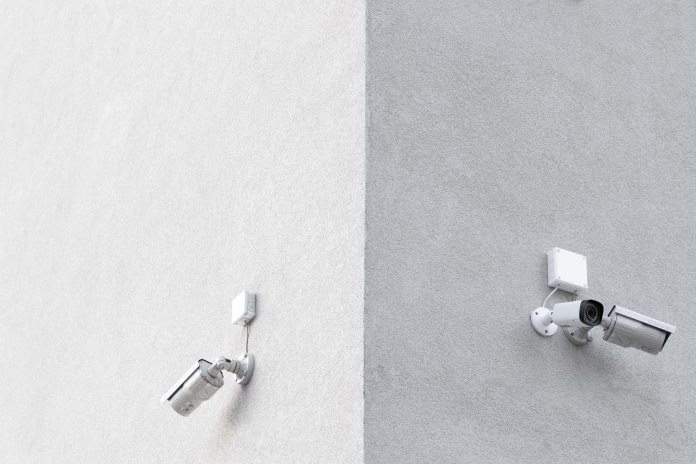The active-threat in populated settings has become a major security concern in recent years. Safety in public spaces, private enterprises, schools and universities has become a top policy priority, and state and federal resources are being allocated to improve security measures across the country.
Using some of these funds to install video surveillance as monitors, recorders, and crime deterrents is a no-brainer, but traditional systems that involve tons of video camera accessories and lots of drilling and wiring are not only outdated, but alarmingly ineffective. With the increase in reliance on internet-connected devices, ample consideration must now be given to cyber security—just as much as physical security— and closed-circuit television simply might not be enough.
This begs the question whether these legacy systems should be supplemented and optimized in a way that meets the ever-evolving security demands of corporations and public settings, or if they should be removed entirely and replaced with the latest surveillance equipment.
Ultimately, the answer is contingent upon the consideration of many factors, including the existing infrastructures, bandwidth capabilities, and storage limitations. While some systems may be able to get away with a few upgrades, others will find that it might be time to make the shift to cloud managed surveillance systems.
Technology to the rescue?
Installing a sprawling, inclusive protection package that will cover your entire facility does not need to be difficult. In fact, the conventional command console room full of bulky hardware and monitored by uniformed guards staring at screens is slowly disappearing from existence, thanks to modern technological advances.
On-premise hardware such as network video recorders (NVR) or digital video recorders (DVR) are slowly being replaced by cloud streaming alternatives. Such systems are becoming increasingly popular in small business settings or in securing residential properties, as bandwidth constraints are not as much of a concern, and eliminating the cost of an on-site recorder is appealing. However, large commercial enterprises or public sectors that need several cameras and continuous recording require much more bandwidth usage and might find a cloud-based system limiting. Enter the hybrid cloud video security system.
The hybrid cloud system
Hybrid cloud systems have only recently entered the surveillance market, but they have already proven to be an effective—and much needed—solution for commercial security. Hybrid cloud systems are rather easy to install, requiring only the cameras and a PoE switch. While this footage can be accessed remotely, just as typical cloud storage systems offer, they use a rather innovative approach in saving footage on the camera unit itself and uploading thumbnails to the cloud. This offers officials and executives full remote access to view footage from almost any device while minimizing their bandwidth usage, combining the best of both worlds.
The hybrid cloud and cyber security
With hacking of NVR, DVR and IP-based cameras becoming relatively commonplace, physical resource protection is no longer enough to ensure complete safety. The cyber security of surveillance assets is just as important as the monitoring and recording of the physical grounds.
Systems managed through hybrid cloud solutions are the highest evolution of facilities security planning when it comes to surveillance. These cloud based security camera products protect the integrity of their own systems. They use end-to-end encryption, only outbound metadata channels, automatic updates for software and firmware, and bypass default passwords in order to avoid common vulnerabilities.
Single-point-of-failure problems seen in NVR, DVR, and solo IP setups can be avoided through backups to the cloud. And, crucially, cameras continue to record onto local in-built storage despite internet interruptions. The cameras use outbound-only HTTPS connections and human error is mitigated by the lack of open ports and port forwarding. This kind of comprehensive and self-improving defense is imperative with the evolving threats in the cyber realm.
Smarter over time
Forecasting the future of technology, we can expect devices to play more critical roles in our lives with less demand from end-users, and surveillance systems are on that path. Perhaps the most innovative aspect of modern surveillance systems— hybrid cloud systems specifically—is their shift in structural focus. Unlike conventional systems which rely on their hardware to carry them through upgrades, cloud systems are designed with an emphasis on their software. This means that new updates, features, and enhancements can be upgraded remotely without the constant need to purchase new hardware.
While this is a cost-efficient bonus to such systems, it also allows them to get smarter over time. Such updates are meant to offer greater features while simplifying the interface. Not only so, but upgrades keep the end-user in mind and optimize the security system in ways that require less manual monitoring. They can be programmed to detect unusual scenarios though computer vision and pattern recognition to become more proactive in identifying security risks within the physical or cyber realms of enterprises. These systems can then notify the end-users linking live-footage of the issue at hand.
Cost and compliance
The one-stop-shop and low-cost-installation characteristics of such hybrid systems contribute to predictable pricing and a streamlined budget. It is also easy to scale up, as companies offering this type of service product often charge less for additional cameras and licenses. And it’s important to remember that extensive video surveillance is and should be subject to strict government regulation. Due to the nature of the system setup and business relationship, the vendors have a stake and responsibility in compliance, therefore they’ve taken steps to make it as simple as possible.
Both public and private establishments have found advantages to securing their premises. In addition to providing real-time eye-in-the-sky monitoring and investigative data breaches, such systems serve as a strong deterrent to mischief and unwanted intrusions onto property by bad actors. With both the expansion of security grants nationwide and the development of hybrid cloud solutions, there has never been a better time to revisit outdated security measures and to focus on protecting physical and digital property.
Find a Home-Based Business to Start-Up >>> Hundreds of Business Listings.

















































